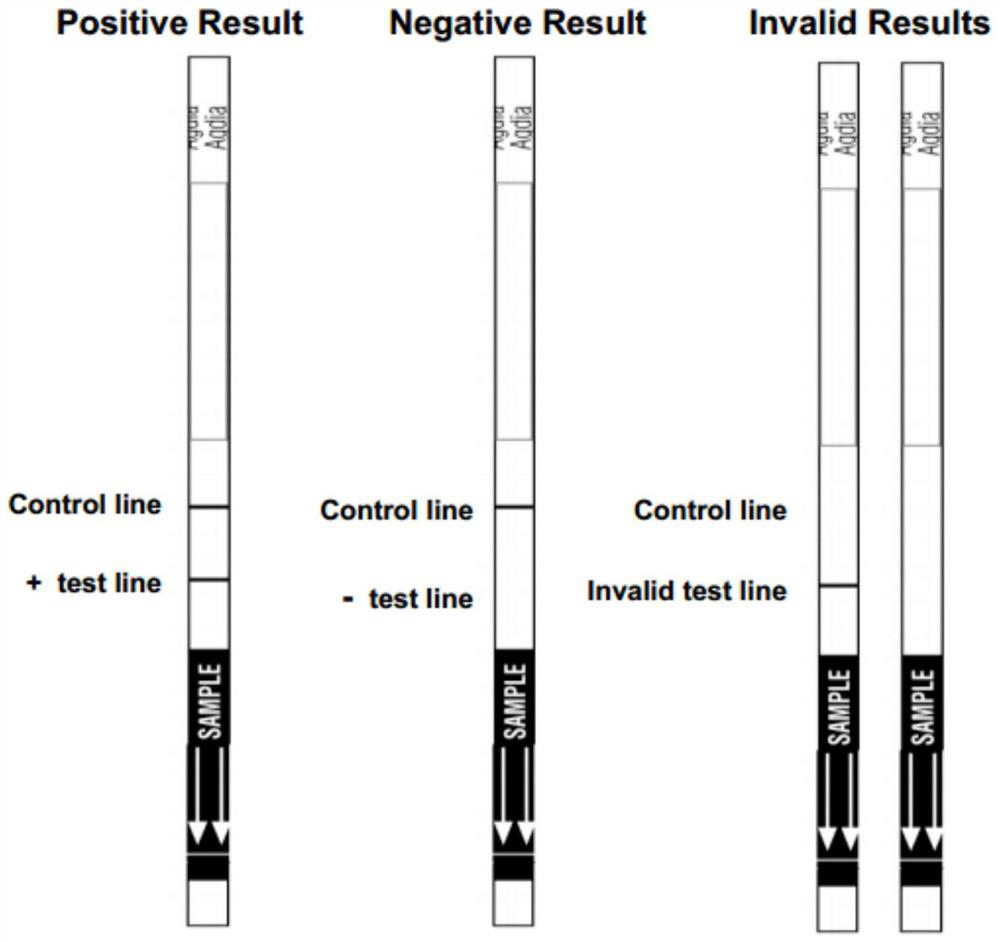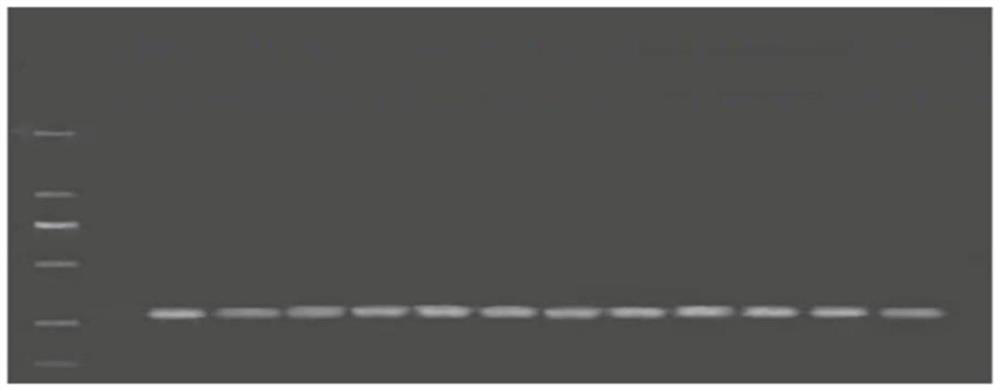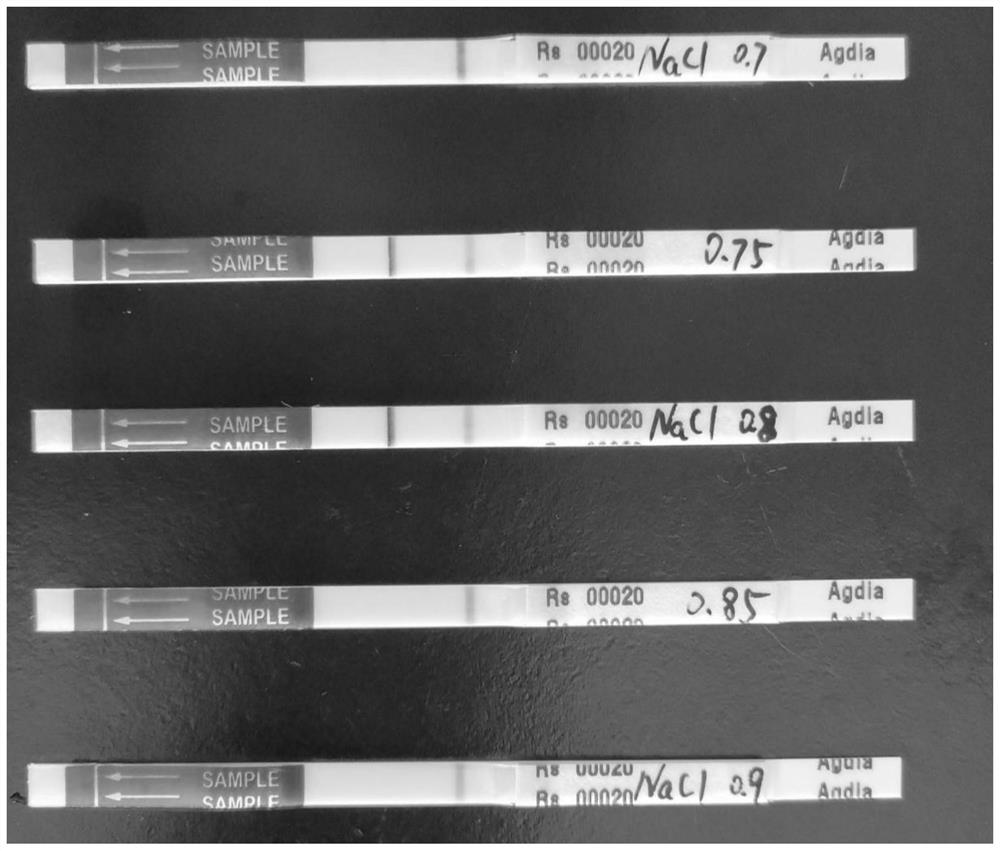Ralstonia solanacearum extraction composition, extract and method for identifying ralstonia solanacearum in casuarina equisetifolia
A technology for bacterial wilt and casuarinas, which is applied in the field of forest disease detection and control, can solve the problems of reducing the selection efficiency of disease-resistant plants, cumbersome and complicated processes, and high damage rate of forest trees, and achieves protection of disease-resistant plants, high detection efficiency, and improved preservation. rate effect
- Summary
- Abstract
- Description
- Claims
- Application Information
AI Technical Summary
Problems solved by technology
Method used
Image
Examples
preparation example Construction
[0047] In a third aspect, the present invention provides a method for preparing the R. solanacearum extract as described above, the preparation method comprising: mixing the water, the sodium chloride and the peptone.
[0048] In one example, the preparation method further includes the step of sterilizing the mixed product.
[0049] In the fourth aspect, the present invention provides a method for identifying R. solanacearum in Casuarina, the identification method includes the steps of extracting R. solanacearum from the plant tissue of Casuarina to be tested and identifying it. Bacteria extract.
[0050] The present invention does not specifically limit the way of extraction, including but not limited to the way of leaching, the leaching time is 15min-25min, for example including but not limited to the following time lengths or the range between these time lengths: 15min, 16min, 17min, 18min, 19min, 20min. The extraction can be carried out under field conditions, and the co...
Embodiment 1
[0056] The present embodiment provides a kind of method for fast identification of casuarina equisetifolia (Casuarina equisetifolia) bacterial wilt in the field, comprising the following steps:
[0057] (1) Configure Ralstonia solanacearum extract
[0058] Accurately weigh 8g NaCl and 10g peptone in the laboratory, first add 50mL distilled water to fully dissolve, and quantify to 1000mL. Use an autoclave to sterilize at 120°C for 30 minutes, and set aside.
[0059] (2) Selection of infected plants and healthy plants
[0060] In the bacterial wilt disease-affected area, the plants with most of the withered and yellowed branches (denoted as "treatment 1") and the completely healthy growth plants (denoted as "treatment 2") in the branches were selected. This forest area has been afforested for 4 years. The average height is 7m, and the average DBH is 6.21cm.
[0061] In addition, in the experimental forest far away from bacterial wilt disease-affected areas, plants with wither...
Embodiment 2
[0079] The present embodiment provides a kind of method for quick identification of Casuarina equisetifolia bacterial wilt in the field, except that the R. solanacearum extract is set at 5 sodium chloride concentrations (0.7%, 0.75%, 0.8%) in step (1). , 0.85% and 0.9%), and in step (2), only select 3 plants with withered branches (embodiment 1 "treatment 1"), each plant was repeatedly measured 3 times, a total of 3 plants × 5 concentrations × 3 times Repeat = 45 times of detection, other operations are the same as in Example 1.
[0080] Using the conditions of Example 1, that is, with reference to steps (3) and (4), the infected plants were tested using different ratios of extracts.
[0081] The result shows that sodium chloride concentration is 0.9%, 0.85% and 0.7% Ralstonia solanacearum extract processing material does not detect Ralstonia solanacearum ( image 3 ), it is speculated that the possible reason is that too high or too low sodium chloride concentration is not c...
PUM
 Login to View More
Login to View More Abstract
Description
Claims
Application Information
 Login to View More
Login to View More - R&D Engineer
- R&D Manager
- IP Professional
- Industry Leading Data Capabilities
- Powerful AI technology
- Patent DNA Extraction
Browse by: Latest US Patents, China's latest patents, Technical Efficacy Thesaurus, Application Domain, Technology Topic, Popular Technical Reports.
© 2024 PatSnap. All rights reserved.Legal|Privacy policy|Modern Slavery Act Transparency Statement|Sitemap|About US| Contact US: help@patsnap.com










